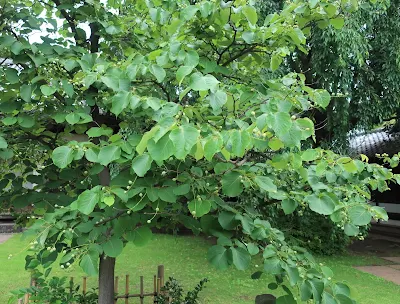Japanese follows English. 英語の後に日本語が続きます。
They are the fruit of the stewartia pseudocamellia or Korean stewartia or Japanese stewartia I saw at Tennōji temple in Ueno, Tokyo. It took me two hours to identify the tree for a reason you can see in the third photo...
They are the fruit of the stewartia pseudocamellia or Korean stewartia or Japanese stewartia I saw at Tennōji temple in Ueno, Tokyo. It took me two hours to identify the tree for a reason you can see in the third photo...
 |
| Stewartia pseudocamellia 沙羅双樹? |
 |
| Korean stewartia 夏椿 |
 |
| The stone pillar says "sal tree," but it's not 沙羅の木じゃないのに。。。 |
You may not find this so interesting, but this can be a very serious problem for translators like me because although this is a mistake due to the original Japanese text (which says "sal tree"), but could be easily believed to be the translator's😭!!
(If you wish to post your comment but don't have a Google account, select "anonymous" from the drop down menu titled "comment as"!)
上野天王寺で見かけた「婆羅双樹(沙羅双樹)」です。カッコ書きにしたのには理由があります。ホントは婆羅双樹(沙羅双樹)ではないんです。
何でも日本には、お釈迦様に縁の深い沙羅の木がなかったので、葉が似ていて同じ頃に白い花の咲く夏椿(ナツツバキ)を代わりに寺院などに植えたとか、夏椿を見たお坊さんが沙羅の木(サラノキ)と間違ったとか言われています。夏椿だということが分かるまで結構な時間がかかりました。
どうでもいい?いえいえ、これって翻訳者にとっては重要な問題なんです。だって元の日本語の間違いってよく翻訳者のせいにされるんですもの😭
(Google アカウントを持ってない方は、コメント記入後に「Google アカウント」をクリックし、「匿名」か「名前/URL」を選択してからご記入ください!)



0 件のコメント:
コメントを投稿